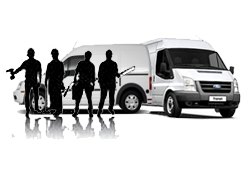Assets are the building blocks of business – everything from office supplies and computers to inventory,
vehicles and facilities. Assets change over time. Some gain value while others depreciate. Some types of
assets are fixed while 
Asset tracking is a critical component of
sound accounting, yet many business
owners struggle with this task.
Mistakes can be costly.
It’s not difficult to see why tracking is so
difficult. It’s not enough to capture when
an asset was acquired and its value at the
time. To be tracked effectively, the asset’s
location, maintenance and usage need to be recorded as well as its ever-changing value. Traditional paper
record keeping is not sufficient for anything but the smallest businesses. For larger companies, there are
computer-based solutions specifically designed to track assets. The challenge, however, is determining
the solution that works best.
Benefits of asset-tracking solutions
Regardless of the specific solution, asset-tracking systems offer a number of benefits over traditional
methods. For instance, they store information in a database that can be queried by fields such as name,
address or value. The value of assets also can be calculated very easily using formulas. Similarly, any
costs associated with an asset can be calculated quickly – even recurring expenses.
Asset-tracking solutions also can generate a variety of reports on a particular asset or class of assets.
Most programs have easy-to-navigate screens that guide users through creating reports detailing
exactly the information they want to see.
Finally, an asset-tracking system saves time and money. Businesses that know what assets they have
are less likely to waste money on redundant purchases. They’re also more likely to make use of what
they have – and not forget about previous acquisitions.
Types of asset-tracking systems
There are several flavors of asset-tracking systems, and each uses its own set of tools. Some rely on
manual data entry via a handheld or a PC while others gather information automatically via RFID
tags, barcode scanners or GPS. Here’s a look at some of the
solutions available today:
- Barcodes: If your assets move around a lot, a barcode tracking system is a good fit. This solution
involves affixing a barcode to every asset. With a scanner or even a PDA, employees can quickly
pull up information on the item, note maintenance activities or location. All the information is
stored in a central database for easy reporting. - GPS: GPS tracking is another option for monitoring mobile assets, especially large ones such as
cars, trucks and trailers. This solution involves attaching a GPS transceiver to the asset. It reports
information on the asset’s whereabouts, as determined by global-positioning satellites, to a central
database that can be queried for up-to-the-minute information. - RFID/Proximity Tags: Proximity systems involve affixing a small tag to an asset and installing
sensors that detect when the tagged item passes by. Major retailers, including Wal-Mart, use such
solutions to monitor inventory movement in warehouses and at stores. Often, proximity solutions
are linked to access-control systems as well as databases for generating reports on asset movements
and other variables over time. - Tracking Programs for Computer Assets: Software-based asset tracking involves installing a
program on computers that are connected to a central-monitoring system and database. Each time
the computer is used, its activities are stored in the central database from which reports can be pulled.
These systems can store information about the computers, including when they’re used and how they’re
used. - Software Tracking: Programs that run on your PCs also need to be tracked, and there’s specialized
software for monitoring license compliance. If a user tries to install unlicensed software, this tracking
software will block the installation and/or notify IT managers. These programs will help your company
avoid audits and costly fines for running unlicensed software.
What to consider in asset-tracking solutions?
An asset-tracking solution will be a major investment for your business. Here are some questions to think about
before settling on a system:
- Ease of Use: Is the user interface simple to use or too complicated? Is It easy or difficult to navigate
through the various options to update assets or generate reports? - Management: How difficult is it to edit data such as splitting assets or changing the description of an
asset? Is it easy to make changes to formulas, such as the one used to calculate depreciation? How well
does the management software integrate with in-the-field tools such as a barcode scanner or RFID
system? - Integration: Does the asset-tracking system play well with other programs, such as accounting or tax
applications? Does it easily export data for analysis in a spreadsheet? - Reporting: How difficult is it to generate a report detailing the type of information you need? Does the
system support templates for easier report creation? How easy to use are the standard schedules and
forms?
If your business does not adequately track assets, it’s throwing money away. Asset-tracking solutions can greatly
simplify this task. But it’s important to research all the solutions available and make sure the one you select is a
good fit for your business. Most importantly, select a system that will grow with your business.
If you would like further information about Asset tracking system click here